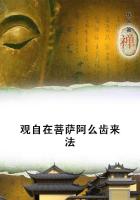" Treatise on the Will." In the pamphlet published in defence of Home, it is urged that, " among the list of subscribers to Edwards' book are many members of this church; and it was dispersed last year in this city by the most zealous friends to religion and true Calvinism." It is clear that Home and his friends wished to shelter themselves under the Calvinism of the Church of Scotland; and the pamphlet quotes Calvin, Turretin, and Pictet.It might have been urged in reply that Calvin stands up for an essential freedom of the will, possessed by all responsible beings;and that the reformers generally, in holding by a slavery of the will, meant a slavery produced by the fall of man and by sin.As to Edwards' doctrine, it is a metaphysical one not before the mind of the reformers; and it is so explained and illustrated by the author as to make it have a very different aspect and practical tendency from that propounded by the Scottish necessarians.
The " Essays on Morality" was the work of Home that produced the greatest sensation.It was followed by other philosophical works.In 1761, he published his "Introduction to the Art of Thinking," in which shrewd metaphysics and practical remarks are grafted on the old logic.For several years be had meditated an extensive work on the principles of criticism, which would inquire into the causes of that pleasure which is derived from the production of poetry, painting, sculpture, music, and architecture.The work appeared in I 762, under the title of " Elements of Criticism." It is gracefully {181} written: it treats of all the subjects usually discussed in books of rhetoric, and shows an extensive reading in the great classical writers of ancient and modern times.He professes to found the whole upon a philosophic basis.But his analysis of the mental principles involved does not seem to me to be very searching or profound.What is the use of telling us, What is now said about the production of emotion or passion resolves into a very simple proposition, that we love what is agreeable and hate what is disagreeable"? He does not follow the Scottish metaphysicians in resolving beauty into association of ideas.He discovers a beauty that is intrinsic as well as a relative beauty.
For years he was collecting materials for a work on man, which appeared in 1774 under the title of " Sketches of the History of Man." This work is meant to describe the progress made by man, in respect of language, food, commerce, the arts, science, government, morality, and religion.He is inclined to think that, as there are different climates, so there are different species of men fitted for these climates, and argues that we cannot account for the differences of mankind by climate or by external agencies.He would believe that there must have been an original difference of languages; but, yielding to the Scriptures, he accounts for the diversities by the confusion of tongues at Babel.He is fond of discovering every where a final cause on the part of God, and a progress on the part of man.He has collected what seems a wide induction of facts; but there is a great want of what Bacon insists on as a necessary part of all legitimate induction, -- " the necessary rejections and exclusions."He was married to Miss Drummond, by whom he became possessed of one of the most beautiful places in Scotland, Blair Drummond, -- on the banks of the Teith, half way between hill and dale, -- in the south of Perthshire.Home was one of the earliest of those agricultural improvers who became very numerous, from this time onward, for an age or two among those lawyers of Edinburgh who possessed landed estates.He took a lead first at Kames, and then at Blair Drummond, in summer-fallow, and in raising green crops and sown grass.His great agricultural work, which made him famous all over Scotland, consisted in clearing the moss of Kincardine, which {182} extended four miles in length and one or two miles in breadth, and was covered with turf, eight or nine feet in thickness, and underneath which was a rich soil.He effected this by giving the land for a time to moss-planters, who floated away the turf by means of ditches which he dug.He was a leading member of the Board of Trustees for the Encouragement of the Fisheries, Arts, and Manufactures of Scotland, and of the Commission for the Management of Forfeited Estates, the rents of which were to be applied to the improvement of the highlands and islands of Scotland.By means of these boards he did much to stimulate the industry of Scotland.It is asserted that he did more than any man in his time in encouraging the introduction of " new modes and instruments of industry, the enclosure and culture of wastes and moors, the rearing of forest timber, the draining and cultivation of moss lands, the raising and spinning of flax, the growth and storing of winter fodder for cattle, the improvement of the breed of sheep, and the manufacture of coarse woollen stuffs."In his old age he published " Loose Hints on Education." He thought that religion should form a main branch of education even in the earliest period of infancy, and that the parents or preceptor should acquaint the child with the fundamental doctrines of revealed religion.The common opinion of him was, that he must be a man devoid of all religion.But a clergyman writes " I have heard him mention the light of immortality as an excellence peculiar to the doctrine of Christ.He gave unqualified praise to Butler's `Analogy,' which is a defence of revealed as well as of natural religion.He was regular in his attendance upon public worship; and during my abode with him he had divine worship in his family every evening." It is interesting to notice that he defends the Scottish view of the Sabbath." This consideration leads me necessarily to condemn a practice authorized among Christians, with very few exceptions; that of abandoning to diversion and merriment what remains of Sunday after public worship, parties of pleasure, dancing, gaming, any thing that trifles away the time without a serious thought; as if the purpose were to cancel every virtuous impression made at public worship." (" Sketches of the History of Man," B.III.) {183}
In his person he was tall and of a thin and slender make.His portrait shows a high, marked brow; a long nose;and a shrewd, humorous face, -- altogether a strong-marked countenance."In his manners there was a f rankness amounting to bluntness, and in his conversation a humorous playfulness." He died Dec.27, 1782, in the eighty-seventh year of his age.















